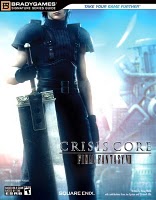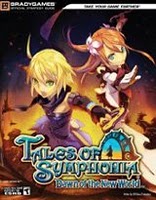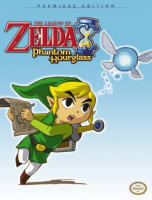 A strategy guide’s quality hinges on the quality of its maps, walkthroughs and appendices, all of which are crucial for a complete and truly helpful guide. Some people will need a guide to hold their hands throughout the entire game, whereas others need a guide for simply looking up information quickly, such as where to obtain a certain ability. A guide of good quality must be able to do both to appease the wide range of gamers.
A strategy guide’s quality hinges on the quality of its maps, walkthroughs and appendices, all of which are crucial for a complete and truly helpful guide. Some people will need a guide to hold their hands throughout the entire game, whereas others need a guide for simply looking up information quickly, such as where to obtain a certain ability. A guide of good quality must be able to do both to appease the wide range of gamers.
I admit I did find some faults with the inFamous Official Strategy Guide, but I’m not entirely sure they are due to the guide as they are a result of my lack of experience when it comes to platform games. Originally when I was writing up my outline of pros and cons, I was sure these problems would seal this guide at no higher than a 4/5. When I finished making my list, I was so dead wrong. Every great thing the guide offers greatly outweighs any little deficiency I found. In fact, I would kill for all guides to contain this much information.
Maps:
I cannot rave enough about the number of maps within the guide. There are individual maps of each island that plot out the story missions and medical clinics, individual island maps plotting the side missions (including the good and evil), individual island maps of the dead drops, individual island maps of all the blast shards, AND a giant tear-out map of all three islands with every blast shard (I used this map as my bookmark). If that wasn’t enough for you, for every side mission that requires some traveling, the walkthrough contains a little map of the route.
No player has any excuse for not finding all of the dead drops, blast shards, and side missions with just these maps. For that reason alone, the guide is worth every penny, since you can’t get maps like these on GameFAQs.
Walkthroughs:
Before I get into the story missions, I have to say that all of the walkthroughs for the side missions are spot on. If you read those ahead of time, there will be no surprises as what to expect.
The same can be said for the walkthroughs of the story missions, except that on occasion–particularly during periods of heavy platforming, such as in the Warren–I had to look up help on GameFAQs to figure out where to go next. The guide, for the most part, would just say work your way towards the top or head towards the blue blip on your radar, and for those with little experience in platforming games, sometimes it is not that obvious where to leap or climb. I will say that for the places where it was really not obvious, the guide did give more direction for what to look for or where to jump.
If I had to count on my fingers how often this happened to me, I think it happened all of twice. Both times were in really frustrating situations for me, so I’m quite certain that is why I think they are worse than they really are.
When it came to the Bosses, I could find no problems. The guide claimed that the boss strategies provided within the walkthroughs were only brief synopses what to do, and there were more detailed strategies within the Opponents chapter. I personally found these “brief” strategies flawless. So much so, that I never died once when fighting the bosses. I know I couldn’t have done that without the guide’s help when fighting Alden and Kessler (Sasha is debatable).
Appendices:
The guide didn’t really have appendices in the traditional sense, because there really wasn’t much for Cole to collect and he didn’t build things or buy new armor. So in place of where the appendices would be are the maps for the dead drops and blast shards, and what could be considered as “appendix” information is all in the front, before the walkthroughs. This information includes highly detailed explanations of all of Cole’s powers, his opponents (and bosses), the stunts he can perform, and all the trophies players can obtain.
Guide Organization:
Since inFamous has both story missions and a plethora of side missions (like so many current games do), the guide walkthroughs were divided up between the story and the side missions. In addition, the side missions were further divided by island and karma. For example, the first set of missions are all on the Neon, and they are listed starting with the neutral missions, then the good, then the evil. Each mission is numbered corresponding to the numbers on the side missions maps. This made it incredibly easy to find information on any mission or where to find particular missions (especially those pesky good missions that disappear as you get close!).
Basically, when I needed to find something, I rarely had to go to the table of contents for help. It was incredibly easily to find anything just by flipping through the pages.
Extras:
Aside from the giant tear-up map/bookmark, the guide also contained 19 pages of the comic book-style art from the inFamous cut-scenes. It is so rare that guides include actual art from the game, so if you’re a fan of artbooks, this bonus will also make the purchase more than worth it.
A cautionary word, though: do not look through the art gallery too closely before finishing the game, because there are a few heavy spoilers within.
Rating:
The inFamous Official Strategy Guide did so many things well, that the few minor irritations were easily forgotten. For the sheer fact that this guide contains so many maps alone is reason enough to recommend its purchase. The walkthroughs seem almost like an extra layer of cake that is great to have, but doesn’t feel necessary. When you consider the bonus art gallery within, it’s a no-brainer. This guide gets a 5/5 from me.


